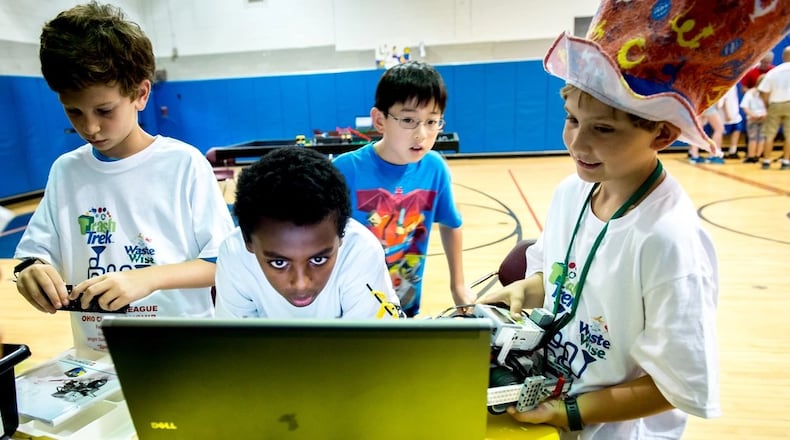Daniel Andrews, AFRL STEM division chief, said he has witnessed young people come up through Starbase and some of its follow-up programs, such as Legacy, and embark on careers at Wright-Patterson Air Force Base, where AFRL is headquartered.
“We’ve seen some kids, actually we have a couple this year, who have gone through the legacy program, that are going to be hired on as full-time, permanent civilians,” Andrews said in a new interview. “We actually have some military members who have gone through the program.”
He never tires of seeing that.
“I remember you when you were like yay big, and now you’re working on some state-of the art research,” Andrews said, describing his reaction. “It’s one of the most fulfilling jobs.”
The Starbase objective: Provide 25 hours of hands-on instruction that meet or exceed national standards, introducing curious young minds to a curriculum of science fundamentals, an exploration of motion and force, computer-aided design, geometry, data analysis and much more.
Of the 90 Starbase programs across the Department of Defense, the one at Wright-Patterson is the only one in Ohio.
The local program also was one of the first to earn “Center of Excellence-Level III” status, designating it as a high-performing program in 2022, according to AFRL. Wright-Patt’s program is one of only six to receive that distinction, according to a proclamation from Ohio Director of Military and Veteran Relations Tammy Puff.
The approach is simple: After parents or guardians sign permission slips, students at participating districts are transported to a base child development center for five days of five-hour STEM sessions. AFRL asks only that participating schools provide transportation and lunches for the students.
The local school districts taking part: Kettering, Dayton, Mad River Local Schools, Fairborn, Beavercreek, Yellow Springs and the archdiocese of Cincinnati.
“This isn’t just a normal Starbase,” AFRL commander Brig. Gen. Jason E. Bartolomei said earlier this month celebrating the program’s 20th anniversary. “This is one of the best Starbases. That’s a big accomplishment, and my understanding is that the demand is so high that there’s a waiting list to participate. I think it speaks volumes to the success of the program.”
STEM goes to the heart of AFRL’s science-focused mission. Bartolomei noted that AFRL focuses on the same areas that STARBASE students explore.
The curriculum is approved at the DOD level and follows national science and math standards.
“In a typical day, they (students) get hands-on, minds-on STEM activities,” Andrews said. Students can find themselves learning to code, building rockets and a lot more. Everything is “timed out” and students stay busy, he said. They’ll pursue experiments and activities they may not see at school.
“The students have a blast, and they constantly tell us, ‘Hey, we want to come back,’” Andrews said. “They want Starbase in the next grade.”
There are options beyond Starbase. If students want to continue their STEM journey, AFRL offers a Legacy craftsman camp, and in time, students can actually work a junior apprenticeship on the base.
Nationally, Starbase has been around since 1993, having started at Reserve and Guard bases. Nationwide, some 47,000 students have participated.
Wright-Patt was among the first active-duty bases to launch a Starbase program. It began locally when Kathy Schweinfurth, chief of Wright-Patt’s Educational Outreach Program, and Vince Russo — a University of Dayton engineering professor and a co-founder of Air Camp — advocated for a way to expose more children to the worlds of STEM.
As a parent, if you want this opportunity for your child, reach out to your school district, Andrews advised. Districts can add themselves to AFRL’s Starbase waiting list by calling the base’s educational outreach office at 937-656-2273.
For more information, visit http://wpafbstem.com.
About the Author


